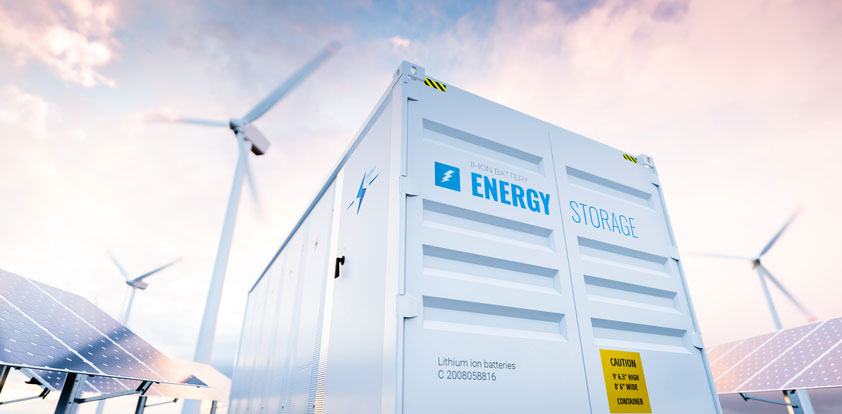First, windmills stepped up to the plate in a big way a couple decades ago. Although solar has been around a long while too, harnessing the sun wasn’t a big hitter until the last several years. Now, we have batteries in the on-deck circle.
Obviously, batteries are the perfect compliment to wind and solar. When there is excess energy not needed in the home, it can be stored in batteries and used when needed during times like a power outage or peak demand periods.
Batteries and battery storage have been evolving much like the way LED bulbs have transformed how we light our homes, at least from a technology level. To be clear, batteries are still very expensive. They won’t be the price of an LED anytime soon!
Powering the average home, including HVAC systems, lights, appliances, TVs, etc. requires a tremendous amount of energy. Going completely off grid would require a solar array coupled with battery storage that is properly sized to your very specific energy consumption. Because the technology is evolving and battery banks are not readily available, I still don’t think they are cost effective for the average person….yet.
Electric vehicles and declining solar panel prices have driven a dramatic increase in development and research in batteries. While the current focus is on commercial/large scale applications an impact on residential use is sure to follow.
Lithium ion batteries have become the dominant form for new energy storage installations thanks to significant cost declines in battery modules, favorable performance characteristics, flexibility of application and high energy density. While costs have plummeted in recent years, costs are projected to fall at a slower rate in the future. High demand for batteries is now driving up the cost of key components like lithium, nickel and cobalt.
Lithium ion is best optimized for durations up to 6 hours. There are currently no economical long duration battery storage technologies in the 12-72 hour range. In reviewing 5 different co-op pilot projects across the country, the longest a battery was able to sustain power was 4 hours. This may get a utility through a small problem but certainly not a major storm. More utility scale projects are in progress as the industry tries to push past this time limitation.
After power outages and peak time of day periods, battery storage has the potential to reduce or optimize transmission investment. Batteries placed in the right location could eliminate the need to upgrade or rebuild an aging transmission line. This technology now gives utilities one more player on the team that will be easier to site, maintain and run over the long term.
Like a designated hitter, cooperatives like yours and other utilities will use future battery storage systems in key situations specific to their needs at the time. Individuals who are able to disregard the rate of return on a battery investment will continue to explore small scale use as well. It is simply the next step in the evolution of wind, solar and other forms of renewable energy. Batteries clearly solve the biggest drawback of wind and solar – no wind, no sun. They just need to continue to work on the cost and duration issues.
Cherryland will continue to monitor the evolution of batteries and storage systems. When the cost and project is right, your cooperative will proudly shout, “BATTERY UP!” and get this player into the game of serving you.



Thanks for this article Tony, it spotlights a number of issues that will eventually be resolved and will make renewables even more viable as a transition energy. I wish to nitpick your use of “windmills”. What exactly are the wind generators “milling”? Centuries ago they milled grain, but I feel the continued misuse of that term only serves to minimize the advanced technology used in the production of wind energy. Perhaps “wind turbines” “wind generators”, or “WECS” are more apt descriptors for this advanced technology.
No argument. I am simply an aging utility guy stuck in old terminology. I will try to do better. Thanks for setting me straight.
Thank you. Nice to know some long range planning/direction heading and i like the direction
I sense a change in tone with this column that is reassuring, that my Co-op is perhaps willing to embrace the future more than the past. Thank you Tony for outlining the possibilities for a better future.
The battery equation is actually very simple. You pay up front for energy storage and bet on how often you’ll use that storage. Summer to winter solar production is a big part of the equation here in Northern MI. 12% of annual solar is Nov-Jan. 70% is April-Sept. Lowest cost for huge batteries is about $250/kW-hour. Residential batteries cost $500-600/kWh. Tony is correct that there is a sweet spot for battery sizing for commercial backup. If you spend more for battery oversizing to get 12 hours of backup, you probably wasted money. Same for residential. If the batteries are just for the occasional 2-4 hour outage, it’s still expensive – $7,000-9,000 up front – same as the cost for a small generator. Despite all the battery hype, residential battery costs have not changed in the past five years. In many cases, cost has increased.
The best value for a residential battery system is for time-shifting to skirt the Cherryland, Consumers and DTE policy that pays 1/2 retail for any summer excess solar generation. Put your daytime excess solar generation into the battery and program it to discharge it to home use from 7PM until 9AM. A complicated process, but we have customers who are doing exactly that. Downside is that you’ll only have 20-30% of battery capacity from 8am-noon as the batteries recharge.
Bottom line: Batteries are still an expensive and complex process. It’s improving, but slowly and very carefully.
Here in Australia my state government subsidizes batteries for each rooftop solar installation. A no brainer. The grid can use these batteries as required.